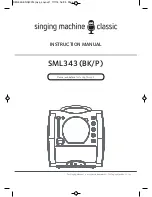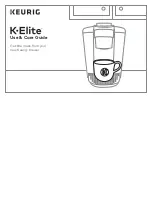
- 23 -
BOSS TIG 160HF
、
200HF Operating Manual
11. Arc start is not smooth.
A Tungsten electrode is too large for
the welding current.
B The wrong electrode is being used
for the welding job.
C Gas flow rate is too high.
D Incorrect shielding gas is being
used.
E Poor work clamp connection to
work piece.
A Select the right size electrode.
Refer to basic TIG welding guide.
B Select the right electrode type.
Refer to basic TIG welding guide
C Select the correct rate for the
welding job.
D Select the right shielding gas.
Refer to Basic TIG Welding Guide.
E Improve connection to work piece.
Table 17
9.03 Stick welding problems
Description
Cause
Remedy
1 Gas pockets
or
voids in weld metal
(Porosity).
A Electrodes are damp.
B Welding current is too large.
C Surface impurities such as: oil,
grease, paint, etc.
A Dry electrodes before use.
B Reduce welding current.
C Clean joint before welding.
2 Crack occurring in
weld metal soon
after solidification
commences.
A Rigidity of joint.
B Insufficient throat thickness.
C Cooling rate is too high.
A Redesign to relieve weld joint of
severe stresses or use crack
resistance electrodes.
B Travel slightly slower to allow greater
build up in throat.
C Preheat plate and cool slowly.
3 A gap is left by
failure of the weld
metal to fill the root
of the weld.
A Welding current is too low.
B Electrode too large for joint.
C Insufficient gap.
D Incorrect sequence.
A Increase welding current.
B Use smaller diameter electrode.
C Allow wider gap.
D Use correct build-up sequence.
4 Portions of the weld
run do not fuse to
the surface of the
metal or edge of the
joint.
A Small electrodes used on heavy cold
plate.
B Welding current is too low.
C Wrong electrode angle.
D Travel speed of electrode is too high.
E Scale or dirt on joint surface.
A Use larger electrodes and preheat
the plate.
B Increase welding current.
C Adjust angle so the welding is
directed more into the base metal.
D Reduce travel speed of electrode.
E Clean surface before welding.
5 Non-metallic
particles are trapped
in the weld metal
(slag inclusion).
A Non-metallic particles may be trapped
in undercut from previous run.
B Joint preparation too restricted.
C Irregular deposits allow slag to be
trapped.
D Lack of penetration with slag trapped
beneath weld bead.
E Rust or mill scale is preventing full
fusion.
F Wrong electrode for position in which
welding is done.
A If bad undercut is present, clean slag
out and cover with a run from a
smaller diameter electrode.
B Allow for adequate penetration and
room for cleaning out the slag.
C If very bad, chip or grind out
irregularities.
D Use smaller electrode with sufficient
current to give adequate penetration.
Use suitable tools to remove all slag
from corners.
E Clean joint before welding.
F Use electrodes designed for position
in which welding is done, otherwise
proper control of slag is difficult.
Table 18








































